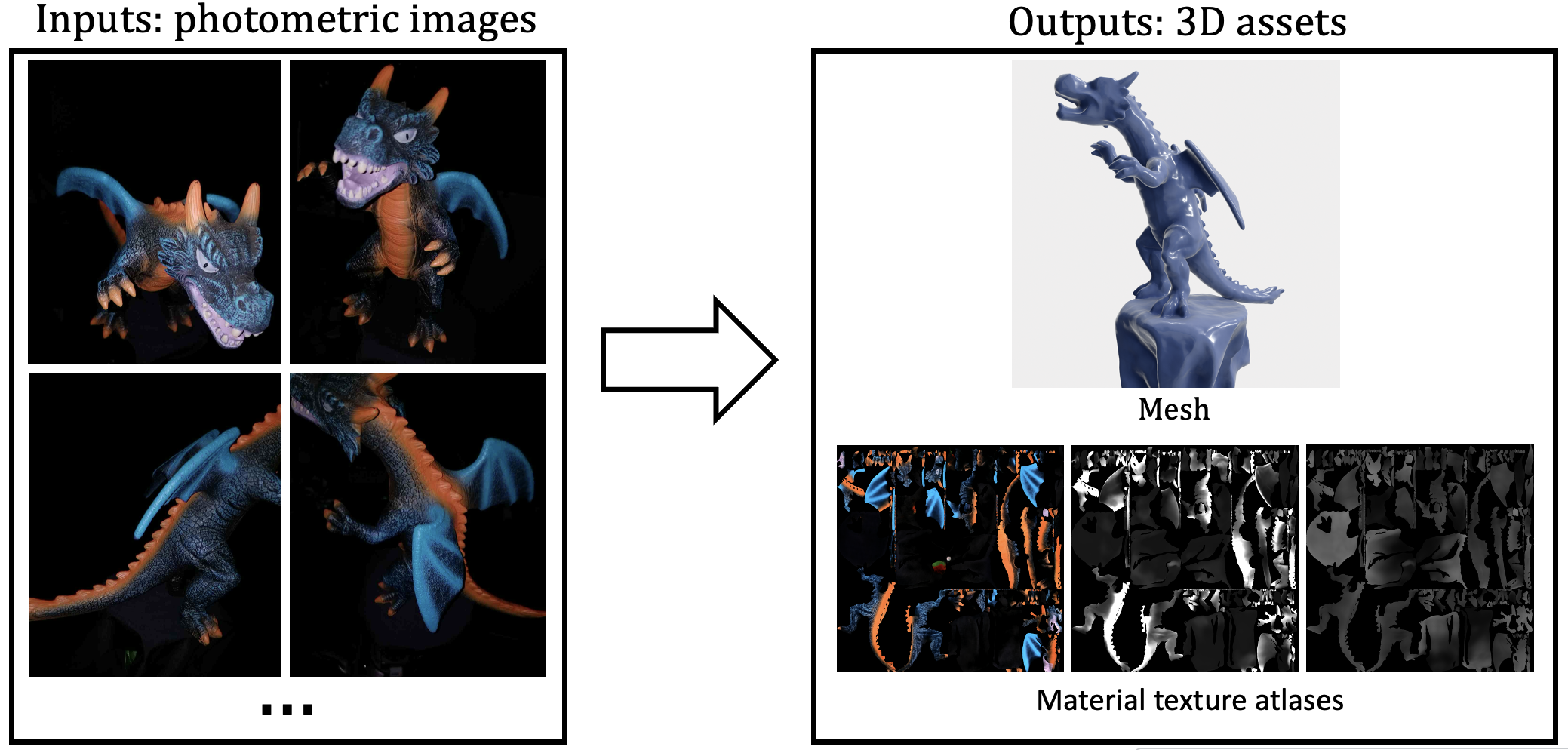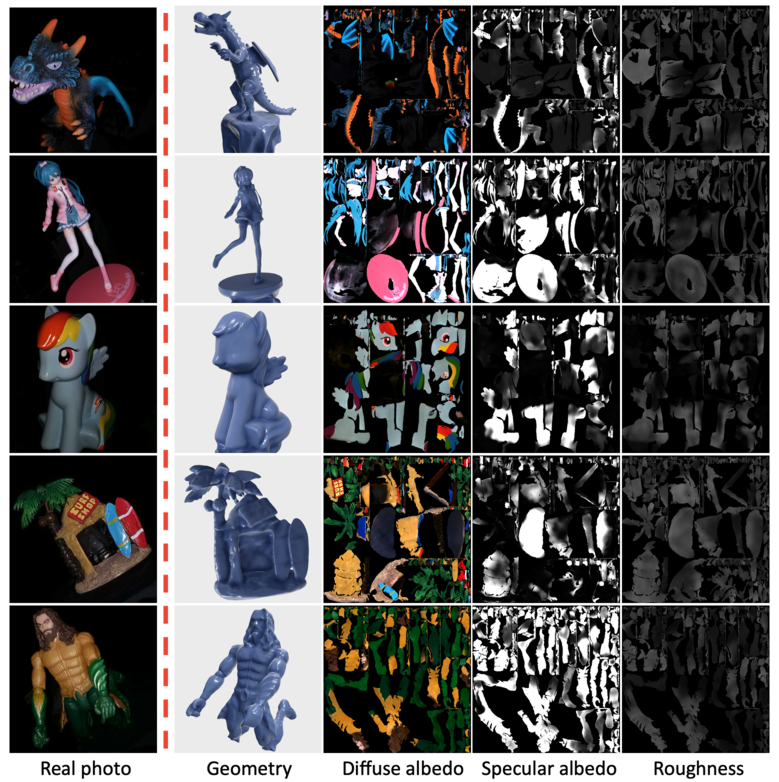Note: this repo is still under construction.
Project page: https://kai-46.github.io/IRON-website/
git clone https://github.com/Kai-46/iron.git && cd iron && . ./create_env.sh. ./download_data.sh. ./train_scene.sh drv/dragonOnce training is done, you will see the recovered mesh and materials under the folder ./exp_iron_stage2/drv/dragon/mesh_and_materials_50000/. At the same time, the rendered test images are under the folder ./exp_iron_stage2/drv/dragon/render_test_50000/
Check test_mitsuba/render_rgb_envmap_mat.py.
Check evaluation/eval_mesh.py and evaluation/eval_image_folder.py.
Check render_synthetic_data/render_rgb_flash_mat.py. To make renderings more shiny, try scaling up the specular albedo and scaling down the specular roughness; to make renderings more diffuse, try the opposite.
We use the OpenCV camera convention just like NeRF++; you might want to use the camera visualization and debugging tools in that codebase to inspect if there's any issue with the camera parameters. Note we also assume the objects are inside the unit sphere.
@inproceedings{iron-2022,
title={IRON: Inverse Rendering by Optimizing Neural SDFs and Materials from Photometric Images},
author={Zhang, Kai and Luan, Fujun and Li, Zhengqi and Snavely, Noah},
booktitle={IEEE Conf. Comput. Vis. Pattern Recog.},
year={2022}
}
dragon.mp4
We would like to thank the authors of IDR and NeuS for open-sourcing their projects.

